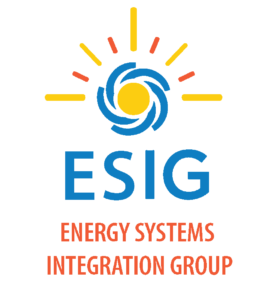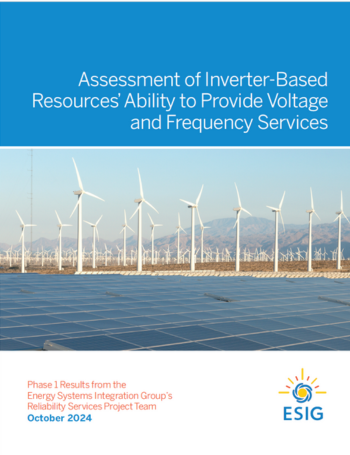The successful operation of a power grid relies on grid services at different time scales in the form of energy, capacity, and essential reliability services. As inverter-based resources (IBRs), such as wind, solar, battery storage, become an integral part of generation mix, it is important to investigate the grid services that they could provide.
The Reliability Services Project Team is undertaking a comprehensive effort to understand the changing system needs for essential reliability services as well as the capabilities of existing and new generation resources, including IBRs, to provide deliver these services. Typically, consideration grid services where there are increased levels of IBRs tends focus on new IBRs with additional advanced capabilities; however, some of these services can likely be obtained from untapped capabilities of existing IBRs already on the network.
The first exploratory study undertaken by the project team assesses the impact of obtaining essential reliability services from existing IBRs to supplement services required from new IBRs with advanced capabilities. The present paper summarizes the results of the study assessing the advantages of leveraging the full capability of existing IBRs using a simulation exercise. This study focused on leveraging inverter-level frequency response and voltage control to assess how using this additional capability can benefit the network in an extremely high-IBR case. It focused on performance-based specification for system needs and services rather than a particular inverter technology, and it highlights the value in considering particular services from generators rather than using a single general term like “voltage source behavior” to explain the behavior that is needed or wanted from advanced or future IBRs.
Ongoing Work: The Development of a Comprehensive Framework for the Assessment of System Needs and the Capabilities of All Existing Resources, Including IBRs, to Address the Needs
The project team is continuing with developing a comprehensive framework for the assessment of system needs and the capabilities of all existing resources (including IBRs) to provide services in response to each of the needs. The framework will answer the following key questions:
- What individual grid services are necessary to ensure reliable operation of a power system?
- How does the addition of IBRs alter the types and quantities of required grid services?
- How can services from IBRs supplement or replace those traditionally provided by legacy synchronous generators? What new or different services from IBRs could enhance or maintain reliability?
The framework will include analysis dynamic stability issues—such as voltage, angle, and frequency stability—in the context of increasing levels of IBRs. It is being tested on a realistic power system model using actual planning cases from a system operator in the U.S. Eastern Interconnection. It will be applicable to any power system, especially those anticipating a high share of renewables, to evaluate system stability in terms of grid strength and voltage and frequency support. This work will conclude in February 2025.

 Existing IBRs
Existing IBRs